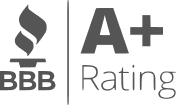Nonprofit leaders are entering one of the most difficult operating environments in more than a decade. Government funding delays, donor fatigue, inflation, and rising costs have pushed many organizations into unfamiliar financial territory. Yet, within this adversity lies opportunity—as long as nonprofits borrow a few proven strategies from their for-profit counterparts.
This article explores that intersection, guided by insights shared by Stephen Halasnik, co-founder of Financing Solutions, a leading provider of nonprofit lines of credit. Mr. Halasnik was interviewed on The Nonprofit Radio Podcast by Tony Martignetti. Mr. Halasnik has built seven successful companies over 30 years—including two that made the Inc. 500 Fastest Growing Companies list—Halasnik brings a rare vantage point: he understands the business world deeply, but works with nonprofits daily.
The result is a practical, actionable roadmap for nonprofit executives navigating 2025 and beyond.
Summary
How Nonprofits Could Think More Like Businesses in a Slowdown
Economic slowdowns hit nonprofits differently than businesses. During COVID-19, donations surged—U.S. giving jumped 5.1% in 2020, according to Giving USA—but that trend has reversed sharply. In 2023, charitable giving dropped 10.5% after inflation, the worst decline since 2008.
Unlike the private sector, most nonprofits experience three simultaneous pressures:
Delayed reimbursements from government agencies
Lower donor engagement compared to pandemic highs
Rising demand for services
Halasnik has seen the impact firsthand. “Twelve years into financing nonprofits, this is the toughest period we’ve observed,” he says. Unlike banks—who often require collateral, personal guarantees, and long vetting timelines—Financing Solutions created lines of credit specifically for nonprofits that need temporary cash flow stability.
For nonprofits accustomed to running lean, thinking like a business may feel uncomfortable, but it is essential for your nonprofits resilience.
Crisis Management: The Business Rule Nonprofits Could Adopt Immediately
For-profit CEOs who have survived multiple recessions often share one mantra:
In a crisis, move fast.
Halasnik—who has navigated recessions in 1991, 2001, and 2008—emphasizes the same point for nonprofits:
“Survival is about being able to fight the next day so that your organization survives tomorrow. That means cutting costs quickly. 65% of nonprofit expenses are payroll and letting people go is the hardest decision but sometimes right sizing must be done. ”
But nonprofits must balance cuts with revenue preservation. During downturns, many organizations make the fatal mistake of trimming fundraising teams or pausing donor outreach. Yet fundraising is revenue. Cutting fundraising is similar to a business cutting its sales force mid-crisis—catastrophic.
The smarter model mirrors what private-sector companies do:
Reduce or delay non-essential spending
Preserve revenue-generating functions
Reinforce the message to donors, funders, and stakeholders
Maintain strategic clarity in the fog of uncertainty
The nonprofit that stabilizes and continues revenue outreach is the one that emerges stronger.
Long-Term Planning: Think Three Years Ahead, Not Three Months
One for-profit strategy nonprofits almost never use—but should—is long-horizon crisis planning.
Businesses ask:
“Where do we want to be three years from now?”
When Halasnik’s companies hit turbulence, he used long-term vision setting as a way to stabilize morale and decision-making. Nonprofits can use the same approach. A future-oriented plan creates alignment, quiets panic, and guides decisions about staffing, programs, and revenue development.
To build the three-year roadmap:
List the programs that must remain at all costs
Identify which programs could be paused if needed
Sketch the ideal revenue mix (donors, grants, fees, contracts)
Define what success looks like post-crisis
If you need a starting point, the Bridgespan Group offers helpful planning resources:
https://www.bridgespan.org/insights/strategic-planning-nonprofits
#1: Work On the Organization, Not In It
Halasnik’s first rule echoes advice shared by business icons like Michael Gerber (The E-Myth Revisited):
Leaders must rise above the daily grind.
Yet for nonprofits under $2 million, executive directors often drown in operations—writing newsletters, running programs, answering phones, and managing donors simultaneously.
To break free from operational overload, nonprofits can borrow business techniques:
Use a “bridge strategy” to expand capacity
Instead of immediately hiring full-time staff, organizations can:
Bring in consultants (grant writers, communications, HR, financial management)
Use freelancers to build systems before a full hire is justified
Deploy trained volunteers to cover non-core functions
As Halasnik notes, business owners focus 95% of their time on revenue. Nonprofit EDs should spend at least 70% of their time on fundraising, partnerships, and visibility, not administration.
#2: Build Systems So the Organization Can Scale
Every successful business—from Starbucks to Salesforce—relies on systems.
Processes. Checklists. Automations. Standards.
Nonprofits, however, often rely on tribal knowledge—“Ask Maria, she’s the only one who knows how to do that.”
Strong nonprofits develop:
Documented procedures for finance, HR, fundraising, and programs
Automated donor engagement flows using email tools
Clear onboarding materials
CRM usage standards (e.g., for Salesforce or Bloomerang)
Halasnik frames it simply:
“If a key staff member left tomorrow, could someone else step into the role quickly?”
If not, the organization is vulnerable.
#3: Revenue Diversification—No Donor Should Exceed 10%
In the corporate world, if one customer makes up more than 10% of revenue, the business is considered high-risk.
Yet many nonprofits rely on:
A single large donor
A single government contract
A single foundation grant
If that revenue source disappears, the organization faces immediate instability.
According to the Nonprofit Finance Fund, 42% of nonprofits rely on their top three funders for over 50% of revenue—a dangerous concentration.
The corporate model is clear: diversified revenue means survival.
Nonprofits should target a mix such as:
30% individual donors
25% foundation grants
20% corporate sponsors
15% government
10% earned income
Each organization’s mix will vary, but diversification is key.
#4: Know Your Numbers Cold—Especially KPIs
If there is one trait every successful CEO shares, it is numerical fluency.
Nonprofit leaders must do the same.
Key KPIs include:
Revenue by source
Cash on hand (in months)
Cost structure as % of budget
Meaningful donor contacts per month
Active recurring donors
Grant submission-to-award ratios
Halasnik recommends maintaining a single monthly Excel sheet, updated without fail, that tracks core metrics and allows comparison across years.
To build this kind of dashboard, see templates from the Wallace Foundation:
https://www.wallacefoundation.org/knowledge-center/Pages/tools-resources.aspx
#5: Avoid Over-Optimism—A Common Nonprofit Weakness
Entrepreneurs know a harsh truth:
Growing too fast before your model is stable can kill you.
Halasnik sees nonprofit EDs fall into the same trap, often because they are idealistic by nature. Idealism is part of the nonprofit DNA—but excessive optimism leads to:
Overcommitting programmatically
Underestimating costs
Assuming donors will “step up later”
Taking on grants that don’t cover full expenses
Experienced business owners focus on minimizing early mistakes so the organization stays alive long enough to succeed.
Nonprofits should emulate that discipline.
The Hidden Superpower: What Nonprofits Do Better Than Businesses
After decades working with both sectors, Halasnik believes nonprofits outperform businesses in one critical area:
Budgeting and forecasting
Nonprofits are exceptional planners because they must be.
Grant proposals require budgets. Government contracts require multi-year projections. Donors demand transparency.
In contrast, Halasnik notes:
“I know100’s of business owners—and none of them budget or forecast.”
This planning rigor gives nonprofits a strategic advantage. But budgeting must be paired with the business strategies above to create real resilience.
The Future Belongs to Nonprofits That Think Like Businesses—but Stay Mission-Driven
The most successful nonprofits of the next decade will blend the best of both sectors:
The heart of a nonprofit
The discipline of a business
The agility of a startup
The planning rigor nonprofit leaders already excel at
This isn’t about becoming corporate. It’s about becoming sustainable.
Nonprofits change lives, protect the vulnerable, and strengthen communities. Their missions deserve the strategic strength that for-profit principles can offer.




